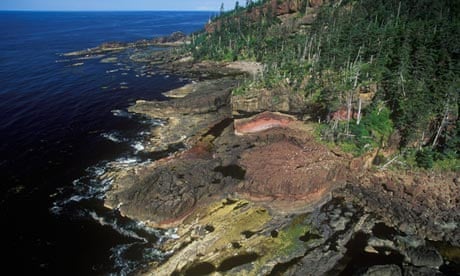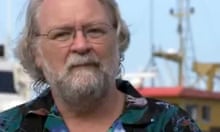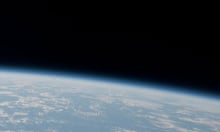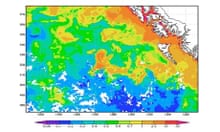As controversy mounts over the Guardian's revelations that an American businessman conducted a massive ocean fertilisation test, dumping around 100 tonnes of iron sulphate off Canada's coast, it has emerged the Canadian government may have known about the geoengineering scheme and not stopped it.
The news combined, with Canadian obstructionism in negotiations over geoengineering at a United Nations biodiversity meeting in Hyderabad, India, has angered international civil society groups, who have announced they are singling out Canada for a recognition of shame at the summit – the Dodo award for actions that harm biodiversity.
They are criticising Canada for being one of "four horsemen of geoengineering", joining Britain, Australia and New Zealand in opposing southern countries' efforts to beef up the existing moratorium on technological fixes for global warming.
The chief executive of the company responsible for spawning the artificial 10,000 square kilometre plankton bloom in the Pacific Ocean has implicated several Canadian departments, but government officials are remaining silent about the nature of their involvement.
In an interview with Canadian radio, John Disney said: "I've been in touch with many departments within the federal ministry. All I'm saying is that everyone from the Canadian Revenue Agency down to the National Research Council and Department of Fisheries and Oceans and Environment Canada – these people, they've all known about this."
The Guardian has seen government correspondence which indicates that Environment Canada officers met with Disney's company in June and expressed their misgiving about any ocean fertilisation going forward, but appear to not have taken further action.
After the huge experiment happened in July, Canadian government officials were anxious to find out if the company's boat flew under a Canadian flag and whether the iron was loaded in Canada.
A large number of Canadian personnel have been involved on the boat, the largest fishing vessel under Canadian registration in the province of British Columbia. Disney, who is also a non-native economic manager for the indigenous council in the Old Masset village in Haida Gwaii, told media that the iron was brought from Alberta.
Russ George, a colleague of Disney's, told the Guardian: "Canadian government people have been helping us. We've had workshops run where we've been taught how to use satellites resources by the Canadian space agency. [The government] is trying to 'cost-share' with us on certain aspects of the project. And we are expecting lots more support as we go forward."
Environment Canada officials refused to comment, saying "the matter is currently under investigation."
"To clear these serious allegations of complicity the Canadian government needs to speak out and account for these events," said Jim Thomas of the international technology watchdog ETC Group. "Officials need to condemn this dump as a breach of Canadian laws and take swift action against geoengineering: in Haida Gwaii that means initiating measures against Russ George and any Canadians involved, while in Hyderabad that means backing a global test ban."
Sources indicate that the Council of the Haida Nations, the political body that speaks for all Haida people, is passing a resolution that any future decision on such projects will have to be ruled on by the entire nation, rather than by one village.
The Haida Salmon Restoration Corporation was established by Old Masset village after they borrowed $2.5m dollars from a Canadian credit union, which provided the loan despite flagging numerous concerns about George's credibility and his plans to try to win carbon credits for the project.
University of Victoria climate scientist Andrew Weaver told media that there are "profound implications" to dumping iron, and no guarantee that the ocean can be used as a carbon sink.
"They are not going to get a penny in carbon credits, because there's no evidence the carbon is going to stay where it is," he said.




Comments (…)
Sign in or create your Guardian account to join the discussion